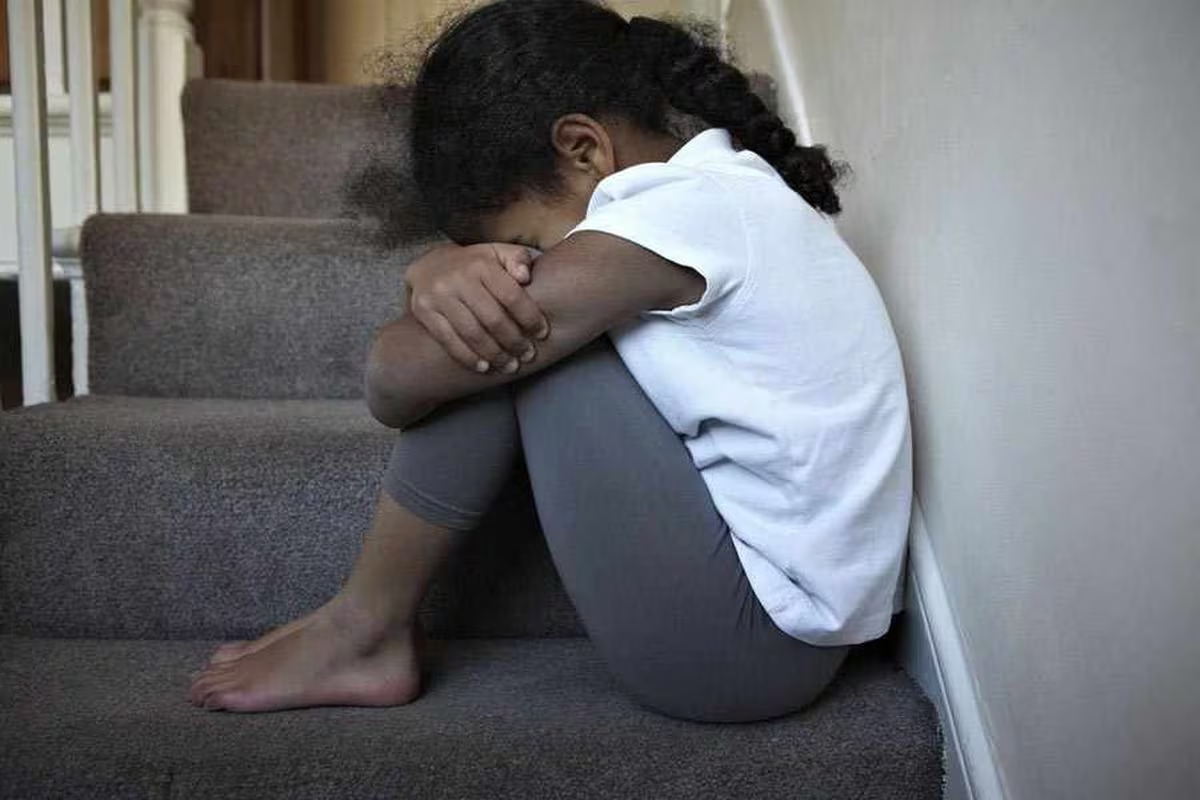Clinicians More Likely to Flag Black Kids’ Injuries as Abuse
The issue of racial bias in healthcare has long been a topic of discussion, particularly in relation to how minority populations are treated in medical settings. One area that has received significant attention in recent years is the tendency for healthcare providers to misinterpret or over-report injuries in Black children as abuse, often based on implicit biases and stereotypes. This troubling trend has serious implications for the healthcare and welfare of Black children, as it can lead to unnecessary interventions, harm to family relationships, and a breakdown of trust between communities of color and the medical system.
Studies have shown that Black children are more likely to have their injuries flagged as abuse by clinicians, even in cases where the injuries may have been accidental. This phenomenon is rooted in a complex web of social, cultural, and historical factors that influence how children and families of different racial and ethnic backgrounds are perceived and treated by healthcare professionals. These biases can lead to disproportionately high rates of child abuse diagnoses among Black children, with devastating consequences for the affected families.
The Impact of Racial Bias in Injury Diagnosis
Injuries in children are common, particularly among younger children who are still developing coordination and motor skills. However, distinguishing between injuries caused by accidents and those resulting from intentional harm can be challenging. Healthcare providers are trained to be vigilant for signs of abuse, and many are taught to err on the side of caution when injuries appear suspicious or inconsistent with the story provided by caregivers.
However, research has shown that clinicians are more likely to misinterpret injuries in Black children as abuse compared to their white peers. This trend is not limited to any specific medical field but is present across various healthcare settings, including emergency rooms, pediatric offices, and hospitals. When clinicians have doubts about the cause of a child’s injury, they may report it to child protective services (CPS), leading to investigations that can disrupt families and cause emotional and psychological harm.
Studies have suggested that implicit racial biases play a significant role in this phenomenon. Healthcare providers may subconsciously associate Black children with higher levels of risk or violence, which can influence how they interpret injuries. These biases are often informed by broader societal stereotypes about race and violence, which can skew the clinical judgment of healthcare providers. The result is that Black children are more likely to be flagged for abuse, even when their injuries are consistent with accidental causes.
The consequences of this bias are profound. Children who are wrongfully labeled as victims of abuse may be subjected to invasive investigations, including interviews, medical exams, and social services involvement. These processes can cause unnecessary trauma to both the child and their family, eroding trust in healthcare providers and the child welfare system. In some cases, families may be unjustly separated, with children placed in foster care or removed from their homes, even though there is no evidence of abuse.
The Role of Implicit Bias in Healthcare
Implicit bias refers to the unconscious attitudes or stereotypes that affect our perceptions, actions, and decisions. These biases are often shaped by societal messages and cultural norms, and they can influence how we interact with individuals from different racial or ethnic backgrounds. In the context of healthcare, implicit bias can affect a clinician’s judgment, leading to disparities in the treatment and diagnosis of patients based on race.
In the case of Black children, implicit bias can manifest in several ways. For example, healthcare providers may unconsciously associate Black children with aggression or delinquency, which can make them more likely to interpret injuries as signs of abuse rather than accidents. In some cases, these biases may be amplified by the child’s socioeconomic status, family background, or perceived “negligence” of the caregivers.
Research has shown that clinicians may be more likely to view Black children as “troublesome” or “difficult” and may overlook signs of neglect or abuse in white children, while overdiagnosing Black children with the same conditions. This disparity in treatment can result in misdiagnoses, inappropriate interventions, and long-term harm to the children and families involved.
One study published in the American Journal of Public Health found that Black children were significantly more likely than white children to have their injuries flagged as abuse. The study also showed that Black children were more likely to face investigations by child protective services, even when the injuries could have been explained by accidents. The researchers concluded that racial bias was a major factor in these disparities, with clinicians disproportionately associating Black children with higher rates of abuse.
Historical and Societal Factors Contributing to Bias
The roots of racial bias in healthcare are deep and multifaceted, shaped by historical, social, and cultural factors. Throughout history, Black people, particularly Black children, have been subjected to stereotypes that paint them as inherently violent, difficult, or prone to criminality. These stereotypes have been perpetuated through media portrayals, political discourse, and societal attitudes, creating a lens through which healthcare providers may unknowingly view Black children.
In the context of child welfare and abuse investigations, these stereotypes are particularly damaging. Healthcare providers may be more likely to assume that Black children are victims of abuse, as they are often portrayed as being at higher risk of violence and neglect. This assumption can cloud clinical judgment and lead to over-reporting and misdiagnoses. Moreover, Black children are often subject to harsher disciplinary measures both in school and in healthcare settings, which may further reinforce the perception that they are difficult or unruly.
The historical legacy of racism in the United States has also contributed to the mistrust that many Black families have toward the healthcare and child welfare systems. In the past, Black families have been disproportionately targeted by child protective services, with children being removed from their homes at higher rates than white children. This has led to a breakdown of trust between Black communities and healthcare providers, making it less likely that parents will feel comfortable disclosing sensitive information or seeking help when needed.
The Consequences for Black Families
When Black children are unfairly flagged as victims of abuse, the consequences can be devastating for the entire family. Investigations by child protective services can be emotionally and psychologically traumatic, especially when there is no evidence of abuse. The process of being investigated can create feelings of shame, embarrassment, and helplessness, and it can strain relationships between parents and children.
In some cases, families may be separated while the investigation takes place, leading to further emotional distress. Children may be placed in foster care, and parents may face legal battles to regain custody of their children, even though they have done nothing wrong. For Black families, these experiences can be compounded by the wider societal context of racial discrimination, which can lead to a sense of being targeted or unfairly scrutinized.
Beyond the immediate emotional toll, these investigations can also have long-term consequences for the child’s well-being. Studies have shown that children who are placed in foster care or removed from their homes are at greater risk for mental health issues, behavioral problems, and academic struggles. The disruption of family life can lead to feelings of insecurity and trauma, which can affect a child’s development and future prospects.
Addressing the Issue: Solutions and Recommendations
Given the growing recognition of racial bias in healthcare, there are several steps that can be taken to address this issue and reduce the disproportionate impact on Black children. First and foremost, healthcare providers must be trained to recognize and address their own implicit biases. This can involve participating in bias training programs and engaging in self-reflection to become more aware of how their attitudes may influence their clinical decisions.
Clinicians should also be encouraged to ask questions and gather information that may help differentiate between accidental injuries and those caused by abuse. For example, taking a detailed history of the injury, including the child’s activities leading up to the event, can help clarify whether the injury is consistent with the story provided by the caregivers. Additionally, healthcare providers should be cautious about making assumptions based on a child’s race, socioeconomic status, or family background.
It is also important for healthcare organizations to implement policies that support fair and equitable treatment for all children. This includes creating systems for monitoring and reviewing cases where injuries are flagged as abuse to ensure that racial bias is not influencing clinical decisions. By fostering a culture of accountability and transparency, healthcare providers can work to rebuild trust with communities of color and ensure that children receive the care they need without the added burden of racial discrimination.
The over-reporting of injuries in Black children as abuse is a serious issue that highlights the ongoing problem of racial bias in healthcare. While healthcare providers are trained to be vigilant for signs of abuse, they must also be aware of how their own biases can influence their clinical judgment. By addressing implicit bias, implementing fair treatment policies, and fostering trust with families, healthcare providers can work to ensure that all children, regardless of race, receive the care and protection they deserve. The future of equitable healthcare relies on the ability to recognize and correct these disparities, ultimately creating a system that is more inclusive, fair, and just for all children.























